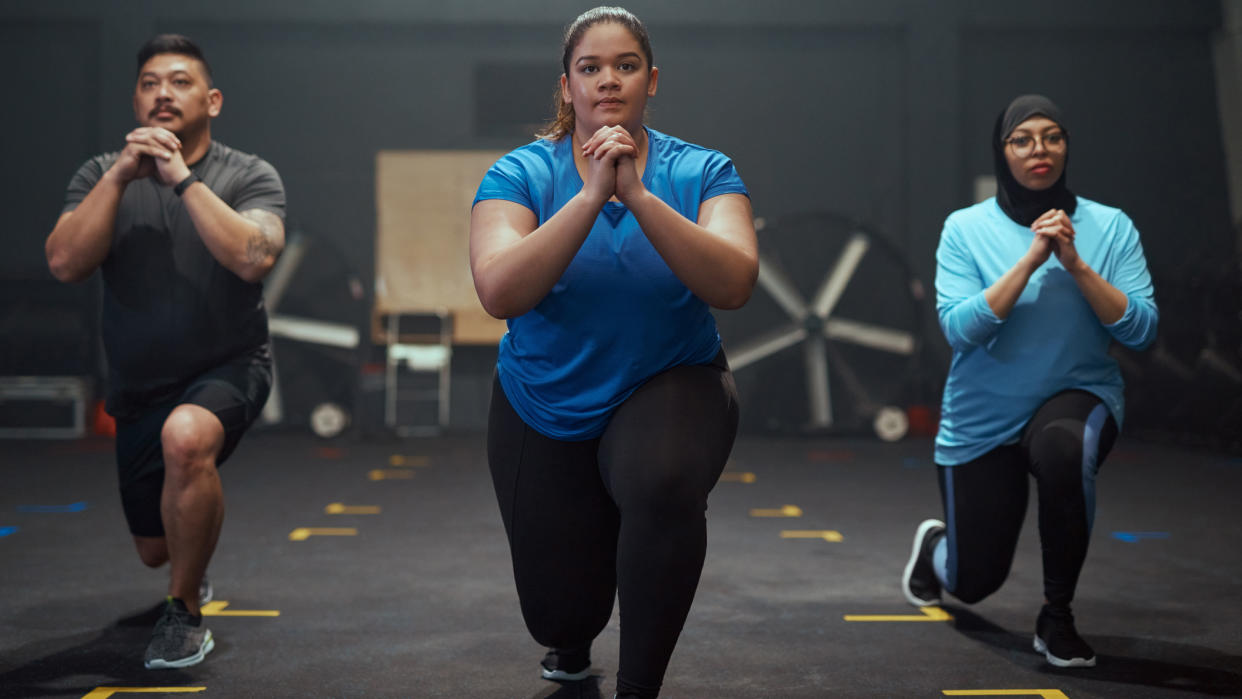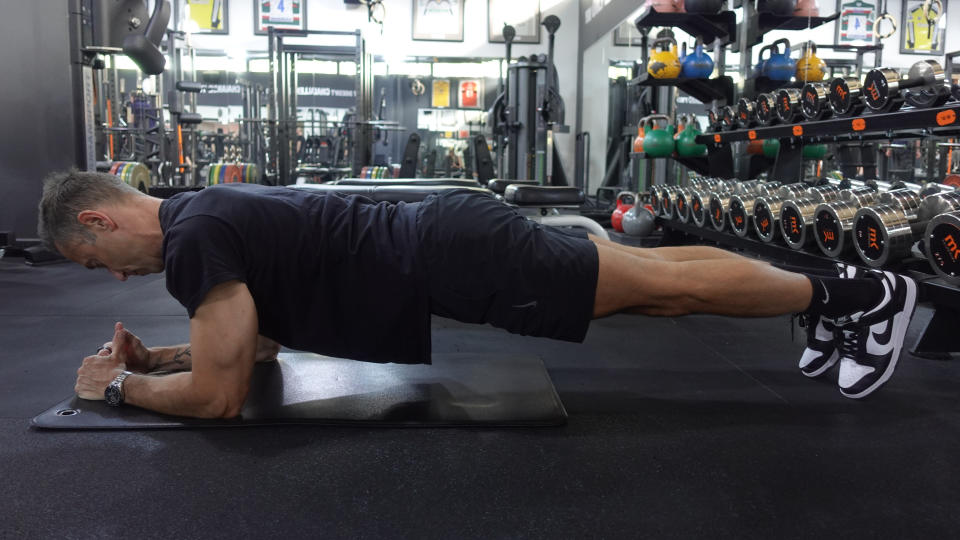This Low-Impact Strength Workout Is Ideal For Beginners

Strength training has many benefits, from improved body composition to healthier bones. But if you’re new to exercise, or you’re returning after a lay-off or injury, you might see people performing high-impact movements in the gym and decide strength training isn’t for you.
But with the right workout and simple modifications, lifting weights can work for anyone. “Low-impact strength training focuses on increasing both strength and endurance of the muscles while putting less stress on the joints and surrounding connective tissues,” says Matt Kendrick, a personal trainer and owner of MK Healthhub.
Kendrick describes high-impact workouts as those that include movements where both feet are off the floor at the same time, such as box jumps and burpees, whereas low-impact strength training typically involves lunges, squats and other resistance exercises which keep at least one foot on the floor.
More Low-Impact Workouts

Low-Impact Cardio Workout
Low-Impact Knee-Strength Workout
Low-Impact HIIT Workout
“Low-impact strength training is ideal for beginners to exercise or people just returning to fitness after a long break, giving a gradual progression and reducing the risk of DOMS (delayed onset muscle soreness),” says Kendrick, explaining that it’s also ideal for people with injury who are trying to build up strength while allowing the injured muscles to heal.
“It is also a good choice for pregnant women at later stages or postnatal, allowing for gradual recovery of the pelvic floor and core,” Kendrick adds. For instance, this expert-approved pregnancy workout plan features low-impact cardio and strength training.
Kendrick has put together a workout that will allow you to build strength without putting unnecessary pressure on the joints.
How To Do This Low-Impact Strength Workout
This workout uses supersets. Do one set of exercise 1A, then one set of exercise 1B. Repeat that sequence until all sets are complete, then move on to the second superset.
Kendrick has given a range of sets and reps to help you fit the workout to your ability.
Workout Overview
1A Sumo squat 2-3 x 12-15
1B Dumbbell bench press 2-3 x 8-10
2A Split squat 2-3 x 12-15 each side
2B Three-point row 2-3 x 8-10 each side
3 Plank 2-3 x 30-60sec
Form Guides
1A Sumo squat

Sets 2-3 Reps 12-15
Stand with your feet wider than hip-width apart with your toes pointing slightly out. Push your hips back and bend your knees to lower, making sure your knees remain in line with your toes. When your thighs are parallel with the floor, pause, squeeze your glutes, then push through your heels to stand.
1B Dumbbell bench press

Sets 2-3 Reps 8-10
Lie on a weights bench holding dumbbells next to your chest, with the weights held at 45° to your torso. Exhale and extend your arms to press the dumbbells straight up. Slowly lower the dumbbells under control as far as comfortable.
2A Split squat

Sets 2-3 Reps 12-15 each side
Stand with your feet hip-width apart. Take a large step forward and find your balance with the heel of your rear foot off the floor. Bend both knees to lower your body as far as you can without your rear knee touching the floor. Push through your front foot to rise, but do not fully straighten your front leg.
2B Three-point row

Sets 2-3 Reps 8-10 each side
Stand with your feet shoulder-width apart, holding one dumbbell and facing a weights bench. Hinge forward at the hips and place your non-working hand on the bench. Keep a slight bend in your knees and a slight arch in your lower back. Lift the dumbbell to the bottom of your ribcage, keeping your elbow in, pause, then lower under control.
3 Plank

Sets 2-3 Time 30-60sec
Starting on all fours, slowly walk your feet backwards into a plank position, with your elbows under your shoulders and body in a straight line from shoulders to ankles. Engage your abdominals by drawing your bellybutton towards your spine. Look at the floor to keep your neck in a neutral position.
